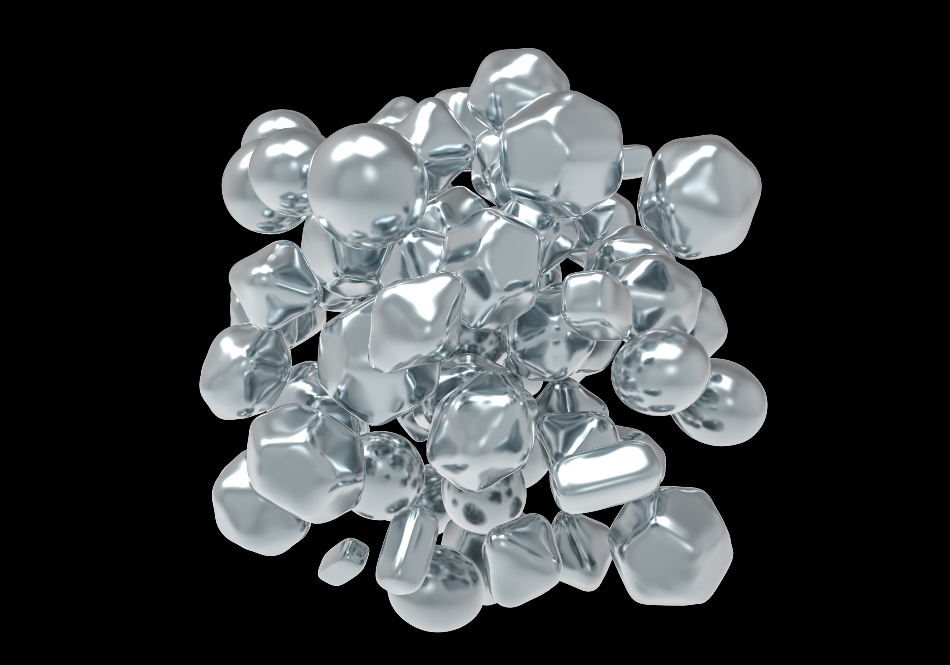
Kateryna Kon / Shutterstock
Understanding how self-assembly occurs in living materials may open the door to the development of new unique materials with custom characteristics. Recently, scientists have identified the use of nanoparticles as the potential key to developing new custom materials through self-assembly.
Self-Assembly Exists in Nature
While the concept of materials that know how to put themselves together may seem like something from science fiction, the process is actually already all around us. Perhaps the best example is DNA, a living material that simply ‘knows’ how to form itself. Instructions are ingrained within these kinds of materials that are living to enable them to put themselves together. This results in a material that not only constructs itself but one that is also dynamic and multi-functional.
Scientists want to understand more about the nature of self-assembly to provide us with the key to developing new materials with this capacity to self-assemble. They are hoping that this will result in the creation of a new breed of materials that currently aren’t in existence.
Potential of New Materials on the Horizon
The potential new materials that scientists would be able to design could have the properties of versatility and strength. Scientists are aiming to create materials that incorporate the properties of both biological and industrial-grade substances. While biological systems have wonderful characteristics, they are by nature sensitive and fragile whereas industrial materials, on the other hand, are strong and durable. Unlocking the key to developing materials that combine these properties could have a significant impact on almost all global industries. These theoretical materials could be fundamental to applications in the sectors of renewable energy, manufacturing, electronics and more.
Nanoparticles Offer the Key
Nanoparticles are of key interest to many scientific fields right now. Their tiny size gives them unique properties that differ to their characteristics as a bulk material. For this reason, their potential is being explored in relation to a number of applications, including the development of self-assembling materials.
Currently, scientists are limited in their exploration with nanoparticles, it has only been possible to develop innovations that use just one type of nanoparticle at a time. Developing custom materials would rely on the interaction between numerous nanoparticles. While this can currently be achieved through a very time-consuming process of adding nanoparticles one particle at a time, self-assembly would allow the creation of these materials to become commercially viable.
Creating Self-Assembly
The first step is for scientists to figure out how nanoparticles behave in different scenarios, and how they interact with one another.
Significant steps forward in this understanding have already been made through research at the Lawrence Berkeley National Laboratory, where researchers have discovered a family of synthetic polymers that construct themselves into nanotubes when introduced to water. The implications of this discovery are vast, it could be a significant step towards developing multifunctional nanostructures that behave similar to proteins, enabling the creation of dynamic materials that could be relevant to numerous applications.
Obstacles to Overcome
The problem is that not all nanoparticles behave the same, and spontaneous self-assembly is linked to the particle’s unique characteristics. Scientists are overcoming this obstacle by focusing on the development of a method that will support self-assembly regardless of the material. The theory is that nanomaterials that want to self-assemble can be attached to nanomaterials that don’t, creating a system where the nanomaterials that do want to self-assemble are used as a kind of fastening strip, locking the other material into place, forcing them into the form they wish.
Currently, scientists are exploring how they can use DNA as a method of instructing particles to connect with one another. They are seeing it as the development of a ‘smart’ tool which may eventually have the capability to allow researchers to control which bonds they want to form, and which they don’t.
The next step in this research is for scientists to develop this method in order to design specific materials that address real-world problems.
Source
Disclaimer: The views expressed here are those of the author expressed in their private capacity and do not necessarily represent the views of AZoM.com Limited T/A AZoNetwork the owner and operator of this website. This disclaimer forms part of the Terms and conditions of use of this website.